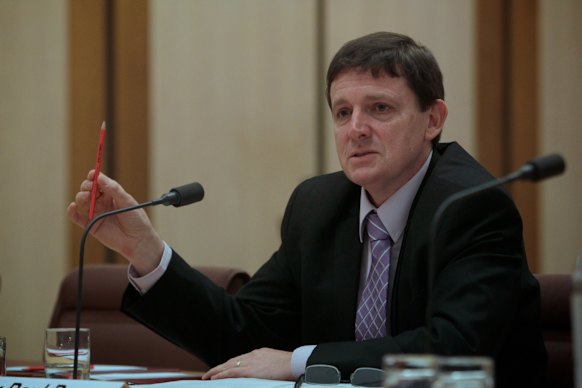Editorial
Australia has been enriched by its million refugees
Australia’s handling of refugees this century has been problematic to some, shameful to others, but next November we will reach a milestone that is not only cause for celebration but a reflection of our best selves.
Refugee Council of Australia chief executive Paul Power says the 1 million mark is expected to be reached in November after the Department of Home Affairs’ declaration in June that Australia had accepted more than 985,000 refugees since World War II.

Paul Power, chief executive of the Refugee Council of Australia.Credit: Alex Ellinghausen
It is an achievement that would make many countries proud, but Australia has accepted refugees from the earliest days of European settlement as people fled homelands with the aim of finding a better life.
The first refugees, Lutherans fleeing religious intolerance in Prussia, arrived in South Australia in 1839, just a handful of years after it became the first colony established specifically as a free settlement. Others from the Continent followed and after Federation, refugees continued to arrive as unassisted migrants, provided they met restrictions imposed by the Immigration (Restriction) Act 1901, the cornerstone of the White Australia Policy. Between 1933 and 1939, more than 7000 Jews fleeing Nazi Germany were settled.
World War II wrecked Europe and raised our awareness of vulnerability, and the Labor government in 1947 brought both issues together with an immigration program to meet labour shortages that eventually welcomed more than 170,000 refugees, the largest groups from Poland, Yugoslavia, Latvia, Lithuania, Estonia, Ukraine, Czechoslovakia and Hungary.
Next came refugees fleeing persecution in Soviet bloc nations, Asians expelled from Uganda and then Chileans, Cypriots and East Timorese, before the fall of Saigon in 1975 saw resettlement of more than 100,000 Vietnamese.
For years few questioned the refugee status of new arrivals. But an Indonesian fishing boat carrying 433 Afghans stranded off Christmas Island in August 2001 changed all that.
Then prime minister John Howard sent the SAS to stop their rescue ship, Tampa, from landing and declared, “we will decide who comes to this country and the circumstances in which they come”. These were not refugees, they were asylum seekers who had “queue jumped”. They became a political rallying cry and three months later the Coalition was re-elected with a 3 per cent swing.
Offshore detention was introduced, then abolished by Labor, and re-established by Labor. It continues: last month 112 asylum seekers were still in Nauru and 104 in Papua New Guinea, while 850 people remain in Australia without any resettlement pathway.
In politicising immigration, governments ignore the potential – comedian Anh Do, artist Judy Cassab, scientist Sir Gustav Nossal, businessmen Richard Pratt and Frank Lowy, former AFL footballer Majak Daw and broadcaster Karl Kruszelnicki all arrived as refugees.
One reason our nation has been enriched by refugees is shared values. They are human values, not just Australian ones. They are based on universal human rights. Political debate continues over future intake levels, but the refugee milestone is not just a number — it represents a million who reached sanctuary and changed Australia for our best.
Bevan Shields sends an exclusive newsletter to subscribers each week. Sign up to receive his Note from the Editor.